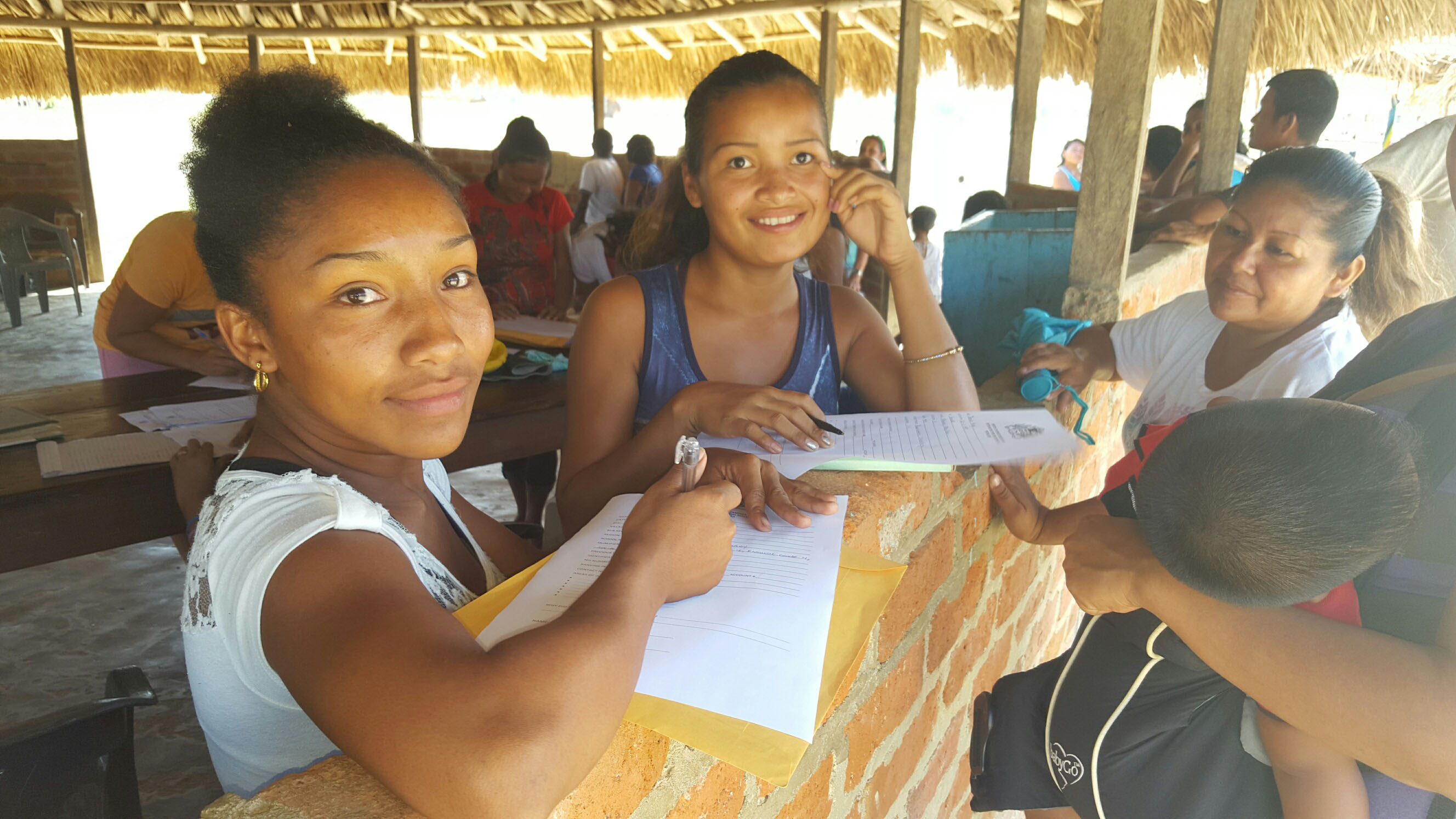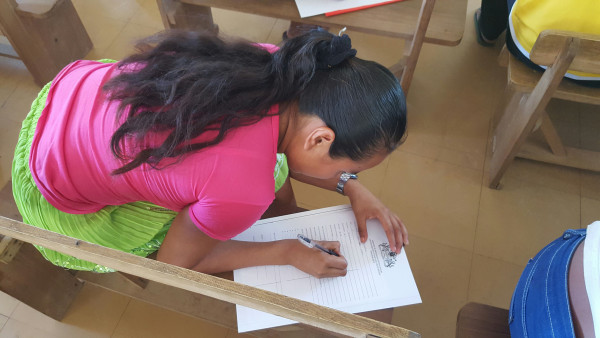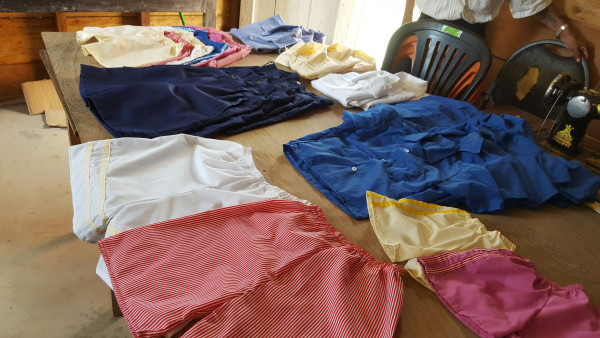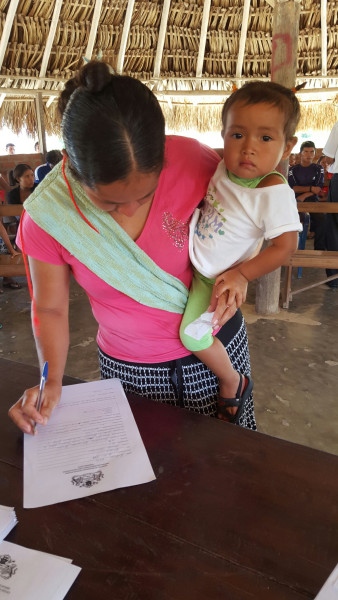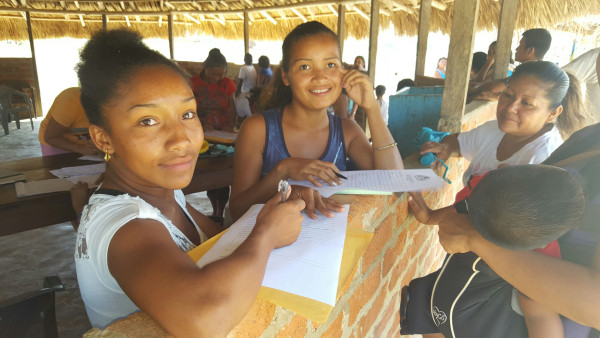Almost four months have passed since the launching of the Hinterland Employment Youth Service (HEYS) programme and the Ministry of Indigenous Peoples’ Affairs is determined to extend it to an additional 100 villages after the 2016 budget allocations are made.
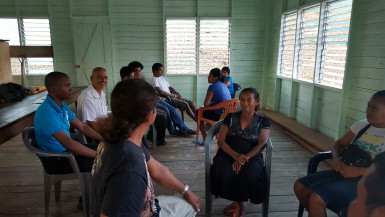
Minister within the Minister of Indigenous Peoples’ Affairs Valerie Garrido-Lowe revealed this plan of action during an interview with Stabroek News last Tuesday.
The HEYS programme, which was launched last October in Paramakatoi Village, Region 8, was introduced as a replacement for the controversial Youth Entrepreneurial and Apprenticeship Pro-gramme (YEAP), under which indigenous youth were engaged as Community Support Officers (CSOs). The present government, while in opposition, had charged that the former PPP/C administration used the YEAP programme and CSOs for political mobilisation.
However, out of recognition of the need to provide opportunities to meaningfully engage Indigenous youths in a manner that would enable them to earn an income in the pursuit of sustainable livelihoods, the HEYS programme was rolled out.
The programme, which runs for one year, targets Indigenous youth between the ages 18- 35 for self-development through skills training. It is intended to facilitate in-house and practical training during the first half, with another six months’ attachment to an office/organisation in a field that is relevant to the students’ area of study.
Participants receive a monthly stipend of $30,000; they are given $20,000 each month, while the remaining $10,000 is being saved on their behalf and will be handed over at the end of the programme. Additionally, on completion of the programme, the successful participants interested in opening their own small businesses in their communities will be offered small grants.
Garrido-Lowe said she has often encountered hinterland youth who “feel lost” after leaving school. “The thing is that when most of them finish school and they haven’t done so well with their subjects, they head straight for the gold bush. From there, they go on to alcohol, drugs and all those things and, before you know it, you have a beaten up young man or sometimes you’re lucky if he even comes back because the gold bush is a very dangerous place,” she lamented.
Therefore, the programme focuses mainly on offering second chances to these youths by presenting them with options for self-development and the hope for a better life. This, the minister said, can be used to create stepping stones for self-development since each successful participant would be presented with a certificate of competency, which they could use for entry at local institutions, such as the Kuru Kururu Training college or the Guyana Technical Institute (GTI), to further their develop their skills.
Garrido-Lowe also stressed that participants would be able to solicit contracts for works within their own village or other villages based on the skills training they receive during the duration of the programme. This, she said, would see the youth “learning and earning” at the same time.
Response
According to Garrido-Lowe, the programme has consistently received positive feedback since the launching last year as the number of active participants has increased to 108 from an initial number of 26 youth who had registered. While the initial number represented youth from the Region 8 villages of Paramakatoi, Bamboo Creek and Mountain Foot, the programme has since been extended to Monkey Mountain, Tuseneng and Taruka, which are also located in Region 8.
“I am happy to say that I was very proud when I went there (Paramakatoi) in November and the garment construction class had already produced clothing. To see youths who could not even peddle a foot sewing machine producing garments that can be worn, I thought it was really, really great,” she stated.
Garrido-Lowe noted that currently the skills training being offered include joinery, carpentry, masonry, sewing and embroidery, and garment construction, while based on requests by some youths, it is hoped that the programme will offer training in auto mechanics and plumbing in the future.
The minister also highlighted the support the programme has received from the varying communities where training sessions are being facilitated, while noting that it was designed for community buy-in since it the community will benefit in the end.
She went on to offer praise to the Paramakatoi women’s sewing group, which granted permission to allow the garment construction group to utilise the group’s sewing machines during training sessions. The junior minister was also proud to say that the facilitator for that specific group, who is trained in garment construction, was sourced from within the village. She said she is particularly pleased by this since the money earned will be circulated within the village as opposed to what would happen if facilitators were being sourced from other regions of the country.
Challenges
While the programme has been off to a generally good start, it has not been without challenges, which currently include the costs attached to supplying the necessary materials and equipment needed for the training sessions as well as difficulties in sourcing facilitators from within the villages.
“We want to take skills training into the hinterland and in order to do that you have to have your tools and you’ll need help to get them,” Garrido-Lowe explained.
“Take, for example, working with the joinery group; while you may have like 15 or so persons in the group, the equipment would not be proportionate to that number. As a result, the participants would be divided into groups, so instead of each of them getting one plane, we would have them use it as a group,” the minister explained.
The minister noted the ministry has made contact with organisations like Food for the Poor to request whatever assistance they can offer as it relates to providing tools or donations that can be utilised.
More challenging is sourcing facilitators from within the local communities, the minister stated.
“Finding the resource persons from within the village is sometimes difficult to do, so when you find them you’re lucky. And that shows how opportunities in the hinterland are so limited that a programme would find it so hard to actually get four facilitators You would end up with three sometimes, until somebody comes back from the gold bush or something. And when you find out they were trained at GTI or elsewhere you’re so happy,” she added.
“I am committed to getting the resource persons from the villages, and if not from that village I’ll look in a neighboring village because I need people to earn, let them get the opportunity to earn,” she further said.
Extension
At the launch of the programme, the minister revealed plans to have it extended to the neighbouring villages of Bamboo Creek and Mountain Foot later that month. However, the minister stated that she was later amazed to find out that that youth from Mountain Foot and Bamboo Creek were making the two-hour journey to Paramakatoi village to attend training sessions together with those from the village.
“I had to accept that they started as well, they just did not want to wait, arrangements were made to facilitate them there as well,” she noted.
Added to that, in early December the minister visited the villages of Monkey Mountain, Tuseneng, Taruka and she was relieved to know that the programme has been well received by the youth in those villages.
At the same time, Garrido-Lowe acknowledged that other hinterland communities continue to look on as they patiently await the expansion of the programme. “I know that the rest of the hinterland region is looking. They have called several times but we are waiting for the next budget allocations to be approved before we can spread to the other villages,” she explained
She went on to say that after the 2016 budget is passed and the necessary allocations are made, the ministry intends to introduce the programme to 100 indigenous villages in regions 1, 9 and 7 within a one-month period.
However, before this can be done, the minister explained, the training of facilitators would be priority. She noted that such persons would be required to undergo a training session related to methods of delivering the curriculum in a youth-friendly and engaging way, after which teams would be assigned to specific locations.
She further explained that while the YEAP did not live up to all its expectations, she saw it as a pilot project that the ministry was able to improve on to better meet the needs of the hinterland youth.
